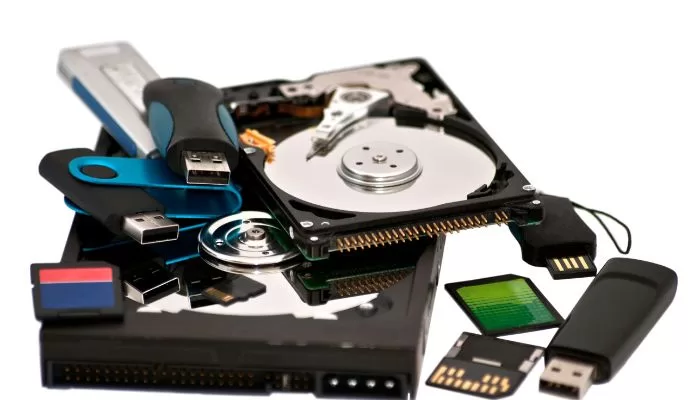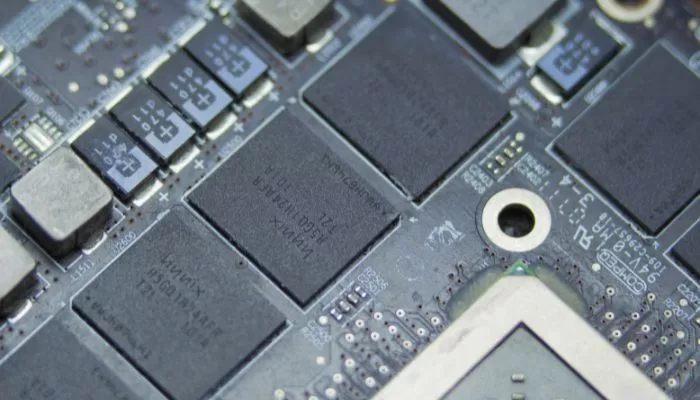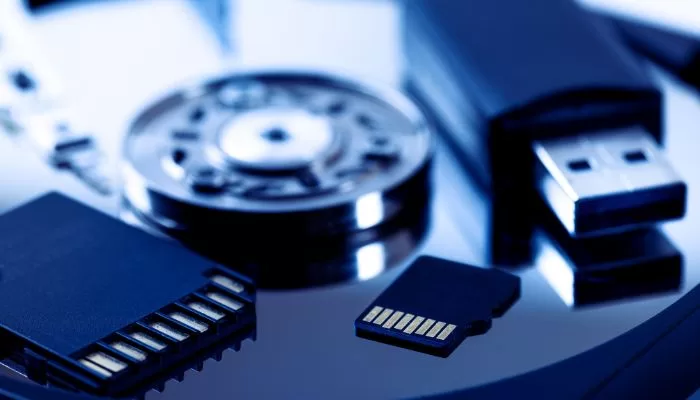What is a Storage Device?
A storage device is a hardware component or equipment used for storing, reading, and writing data in a digital format. For keeping info on computers and other electronics safe and easy to get to, these devices are necessary. There are different kinds of storage devices that are used for different things, like backing up data, storing files, and moving data.
Storage devices are an integral part of any Computer Memory, playing a crucial role in storing and retrieving data. From the humble floppy disk to the modern solid-state drives, storage devices have evolved significantly over the years.
Type of Storage Device
- Primary Memory: Primary Memory, also referred to as internal memory or main memory, is a vital cog in the CPU’s machinery. It houses program instructions, input data, and interim results. Although it’s relatively compact, its importance cannot be overstated. Random Access Memory (RAM) and Read Only Memory (ROM) are prime examples of primary storage.
- Secondary Memory: Secondary memory, on the other hand, is the external vault where programs and data find long-term refuge. Hard disks, CDs, DVDs, pen/flash drives, and SSDs constitute the secondary storage league.
Primary Storage Devices
RAM (Random Access Memory): The instant gratification seeker among storage devices, RAM holds data used immediately, acting as a computer’s temporary memory. It facilitates seamless multitasking, from loading applications to browsing the web and gaming. RAM’s capacity ranges from 1GB to 32GB or even 64GB.
- SRAM (Static Random Access Memory): Known for retaining information as long as the power supply is on, SRAM is used to create Cache memory, boasting speedy access times.
- DRAM (Dynamic Random Access Memory): This storage form encodes binary bits as electrical charges on capacitors, offering cost-effective, albeit slightly slower, storage with high packaging density.
- SDRAM (Synchronous Dynamic Random Access Memory): Even faster than DRAM, SDRAM is widely embraced, paving the way for the DDR series used in desktops and laptops.
ROM (Read-Only Memory): Data stored in ROM is unchangeable, making it the go-to for essential instructions to initiate a computer’s boot-up sequence. This non-volatile memory is also found in various electronic appliances.
- PROM (Programmable Read-Only Memory): Programmable, yet unalterable once programmed, PROM retains data even when the power is off.
- EPROM (Erasable Programmable Read-Only Memory): EPROM allows erasing and rewriting data onto the chip, providing a modicum of flexibility.
- EEPROM (Electrically Erasable Programmable Read-Only Memory): This variety permits data erasure without the need for ultraviolet light, using an electric field instead.
Secondary Memory
1. Magnetic Storage Devices
- Floppy Disk: Once ubiquitous, these small, plastic cartridges stored data for personal computers. However, their relevance has waned with the advent of USB drives and similar technologies.
- Hard Disk (HDD): The workhorse of secondary storage, HDDs use magnetic storage to house data. They are versatile, allowing data to be modified or deleted repeatedly.
- Magnetic Card: These cards, like credit cards and identity cards, store data by manipulating tiny iron-based magnetic particles on the card’s surface.
- Tape Cassette: Commonly used for audio recordings, tape cassettes preserve data on analog magnetic tape.
- SuperDisk: With a capacity of up to 240MB, the SuperDisk offers an alternative for data storage, albeit now less common.
Learn Difference between SSD and HDD | SSD vs. HDD
2. Flash Memory Devices
- Flash memory devices offer portability and efficiency, making them popular choices for data storage.
- Pen Drive (USB Flash Drive): These devices, with capacities ranging from 1GB to 256GB, provide quick and efficient data storage and transfer.
- SSD (Solid State Drive): SSDs, unlike HDDs, have no moving parts, resulting in faster read and write speeds, lower power consumption, and enhanced durability.
- SD Card (Secure Digital Card): Widely used in electronic devices, SD cards come in various sizes and are known for their portability.
- Memory Card: Frequently used in digital cameras, printers, and game consoles, memory cards store substantial amounts of data.
- Multimedia Card (MMC): Integrated circuits like MMC find applications in car radios and digital cameras for data storage.
3. Optical Storage Devices
Optical storage devices, which are removable and feature circular optical discs, serve as secondary storage solutions.
- CD (Compact Disc): CDs can store up to 700MB of data and come in two types: CD-R (Compact Disc read-only) and CD-RW (Compact Disc read-write).
- DVD (Digital Versatile Disc): DVDs offer greater storage capacity than CDs, with DVD-R (Digital Versatile Disc read-only) and DVD-RW (Digital Versatile Disc read-write) options.
- Blu-ray Disc: With a storage capacity of up to 25GB, Blu-ray discs use blue-violet laser technology for denser data storage.
4. Cloud Storage Devices
Cloud storage devices are virtual platforms or services that allow users to store data on remote servers accessible through the internet. These services provide an alternative to traditional physical storage solutions such as hard drives and USB flash drives. Data stored in the cloud is often encrypted and backed up, ensuring its safety and accessibility.
- Google Drive: Google Drive is a cloud storage service from Google that lets you store files for free and works with Google’s suite of workplace apps, such as Google Docs, Sheets, and Slides.
- Dropbox: Dropbox is a tool that lets people store files in the cloud and sync them across devices. It’s famous for having an easy-to-use layout and sharing files.
- Microsoft OneDrive: Microsoft OneDrive is a service from Microsoft that lets you store files online. It works well with Microsoft Office programs and lets Windows users store and share files easily.
- Apple iCloud: iCloud is Apple’s cloud storage service, and it’s mostly for people who use Apple products. It lets you share pictures, files, and other things between iOS and macOS devices.
- Amazon S3 (Simple Storage Service): Amazon S3 is an object storage service from Amazon Web Services (AWS) that is stable and very scalable. It’s often used to store info and websites.
How Do Storage Devices Work?
The storage devices found in computers can be thought of as electronic filing cabinets. They are responsible for the critical task of storing and managing your data, which may be your favorite cat video, an important professional presentation, or a collection of images of your family.
Your information is saved on these devices using a form of data storage known as binary code, which is a specialized language that is only understood by computers. The information that you save is encoded in binary code, which is made up of ones and zeros and is used by the computer to represent the data.
To understand how storage devices function, let’s break it down:
- Data Storage: When you save a file, the data is stored in binary code on the device.
- Accessing Data: To retrieve the data, the computer reads the binary code and translates it into the file you want.
- Read and Write: Storage devices can both read (retrieve) and write (store) data, making them versatile tools.
When you save a file on your computer, for example, let’s assume it’s a photo of an adorable puppy, the computer will convert the image into binary code. It does this by converting the colors, shapes, and features of the picture into various combinations of ones and zeros. Following that step, this binary code is put onto the storage device.
When you decide you want to look at that cute photo of the puppy again, your computer will read the binary code from the storage media, and then it will convert that data into the image of the adorable puppy that you love. It’s almost like magic, the way the computer can take a bunch of ones and zeros and turn them into something that looks like your picture again when it’s displayed on your screen.
Data storage devices are capable of more than just storing information; in addition to this, they can also read and write data. To read means to retrieve the data that you have saved, whereas to write means to add new data to the storage device that you are using. The fact that these devices are able to read and write is what makes them so useful and adaptable in our increasingly digitized lives.
Maintaining Storage Devices
Proper care and maintenance are crucial for ensuring the longevity and reliability of your storage devices. Follow these best practices:
- Regular Backups: Periodically back up your data to prevent loss in case of device failure.
- Keep Drives Clean: Dust and debris can affect performance. Keep your storage devices clean and free from physical contaminants.
- Firmware Updates: Stay up to date with firmware updates provided by the manufacturer to ensure optimal performance and security.
- Avoid Physical Shocks: Handle your storage devices with care to avoid physical damage, which can lead to data loss.




